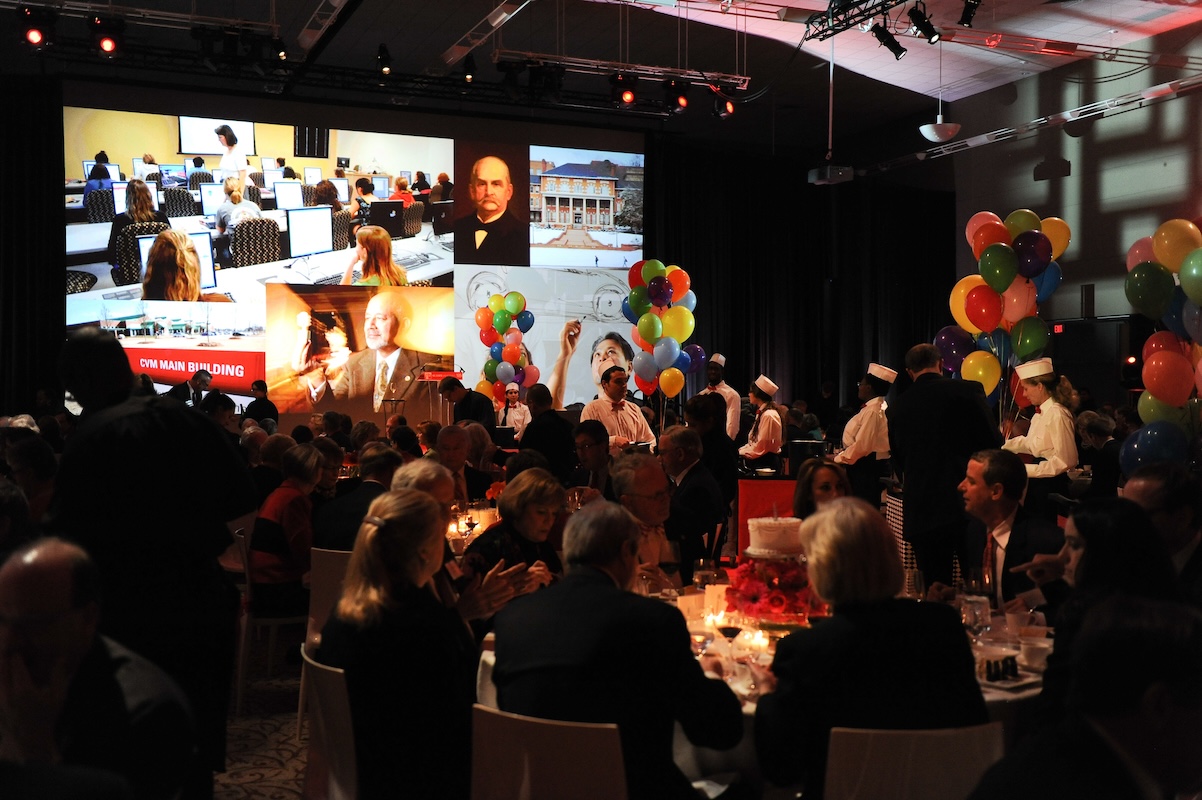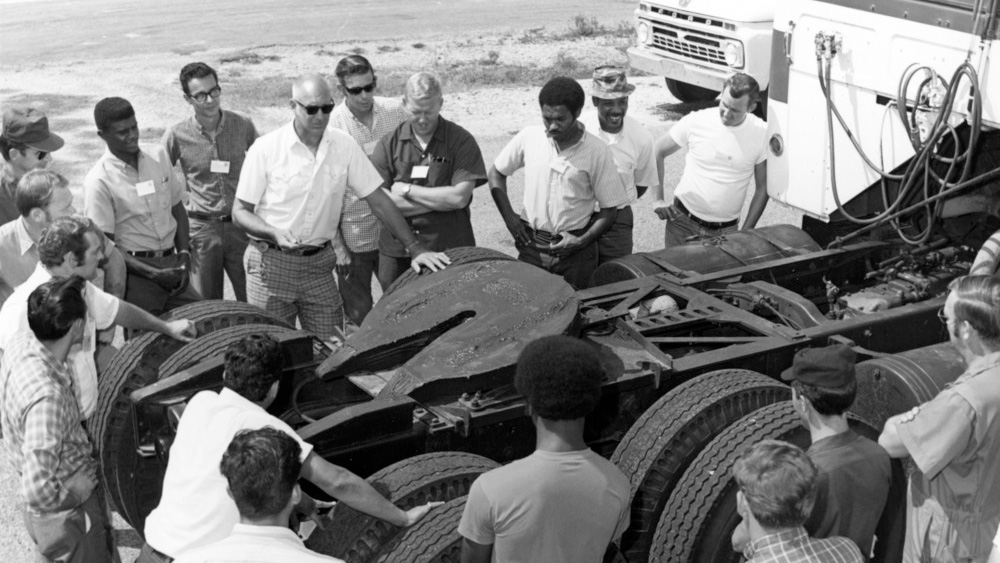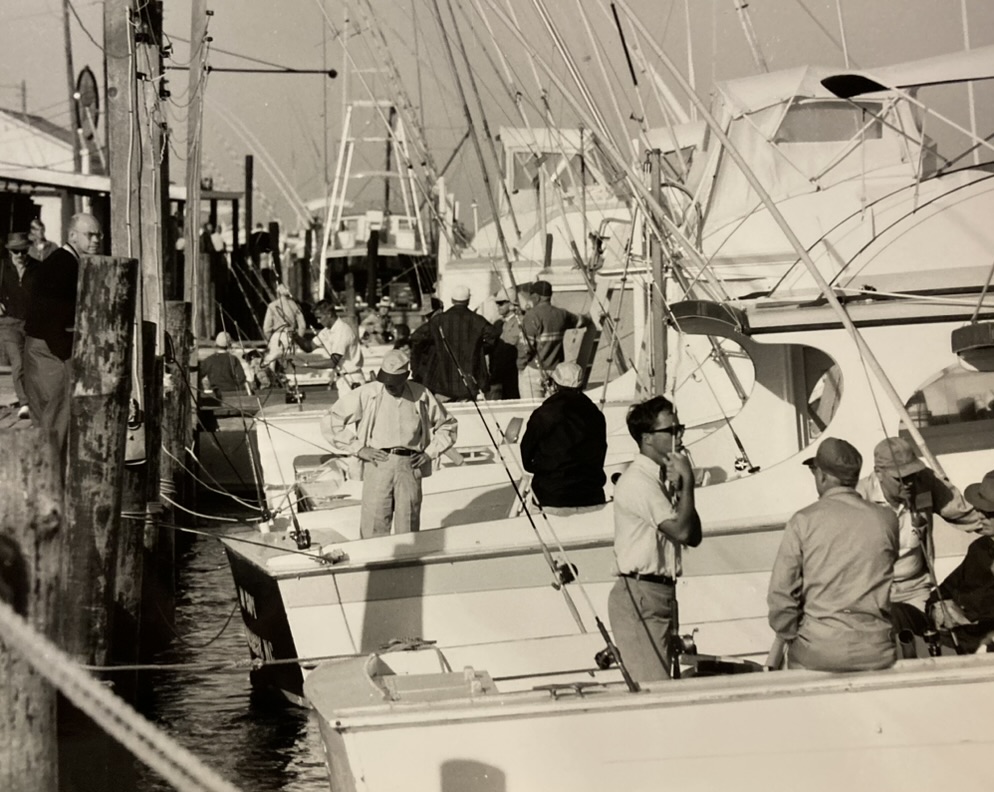1975 – 1999
The Third Quarter of the Division of Continuing Education
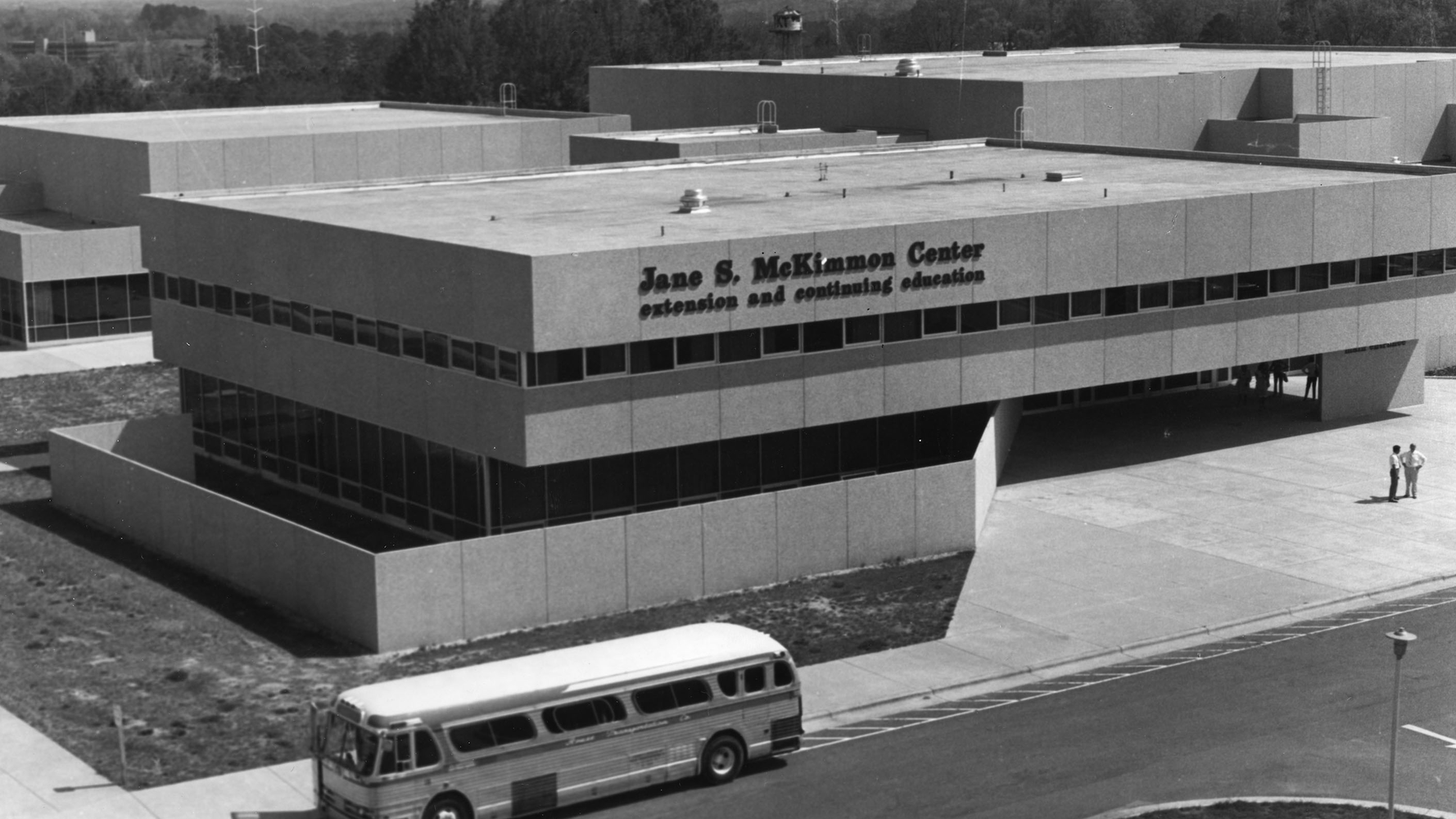
One of the most significant achievements of this era was the opening of the Jane S. McKimmon Center for Extension and Continuing Education. The decision to name the education facility in honor of McKimmon came as the building was nearing completion. University leaders and division leader William L. Turner wished to name the center after McKimmon. Still, there was a hitch — married student housing on campus was already named McKimmon Village in her honor.

In the winter of 1975, Turner and Dean of Students Banks Talley agreed on a switch: the housing would be named for E.S. King, former head of the Campus YMCA, and the continuing education center would be named for McKimmon. In the spring of 1975, these recommendations were approved, and the center opened for business a year later in May 1976.
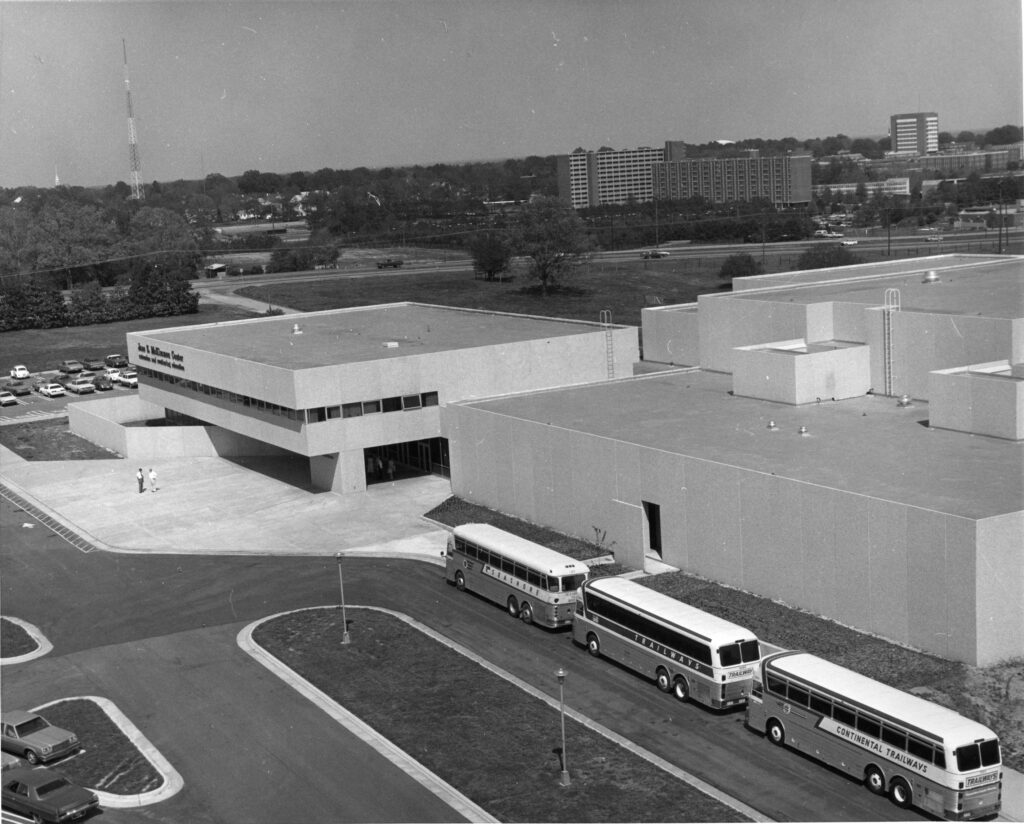
Administrative offices for the division moved from the 1911 Building on central campus to the center. In addition to conference space, the building housed the offices of the Vice Chancellor for University Extension and Public Service (Turner and staff), the Center for Urban Affairs and Community Services (CUACS), a print shop and mailroom, and the Division of Continuing Education.
At this time, the Division of Continuing Education administered non-credit short courses and conferences, as well as credit offerings such as the university’s summer sessions, on-campus evening courses, and off-campus extension classes. These units would later be separated.
The first short course held in the building was Ted Pemberton’s Utilizing Tax Laws for Owners of Closely Held Businesses and the first large conference was the American Dairy Science Association meeting, with approximately 2,000 participants. The McKimmon Center was dedicated Oct. 18, 1976, in conjunction with the installation of the new chancellor, Joab Thomas, after John Caldwell’s retirement in 1975. Originally a stand-alone unit of the division, in the 1990s the building would eventually become part of the division’s Continuing and Professional Education unit.

Not long after the original building was completed, a new wing was built in 1981, which added six additional classrooms and expanded office space for CUACS. Over the years, the McKimmon Center has provided office space to NC State units independent of the division with similar outreach missions, such as the NC Solar Center, Humanities Extension, the Emerging Issues Forum, and the Shelton Leadership Center.
Before the center’s construction, programs were held all over Raleigh, in hotels and motels, on campus, and also across North Carolina. The center’s establishment ushered in a period of new and expanded programming with campus partners, state agencies, associations, nonprofits, and private sector clients.
The McKimmon Center was popular for its central location, quality of service, and ample parking. Soon after opening, campus departments were using the center for graduation events, which continues to this day. The Engineering Career Fair was first held in the 1990s, the largest such fair on the East Coast, and is reserved at the center through 2028. Campus units still represent the largest share of McKimmon Center bookings.
Two long-standing conferences that are still held at the center include the State Construction Conference which began in 1982, and the Emerging Issues Forum, starting in 1986.
The State Construction Conference, coordinated by the Office of Professional Development in partnership with the State Construction Office of North Carolina, remains one of the center’s largest annual events. It brings together representatives from state agencies and institutions, architectural and engineering firms, and contractors to learn about issues related to the planning, design, and construction of state capital projects.
The Emerging Issues Forum draws government leaders and experts in a variety of fields to discuss the challenges facing North Carolina. Based on the forum’s success, its activities expanded and the forum is now part of NC State’s Institute for Emerging Issues.
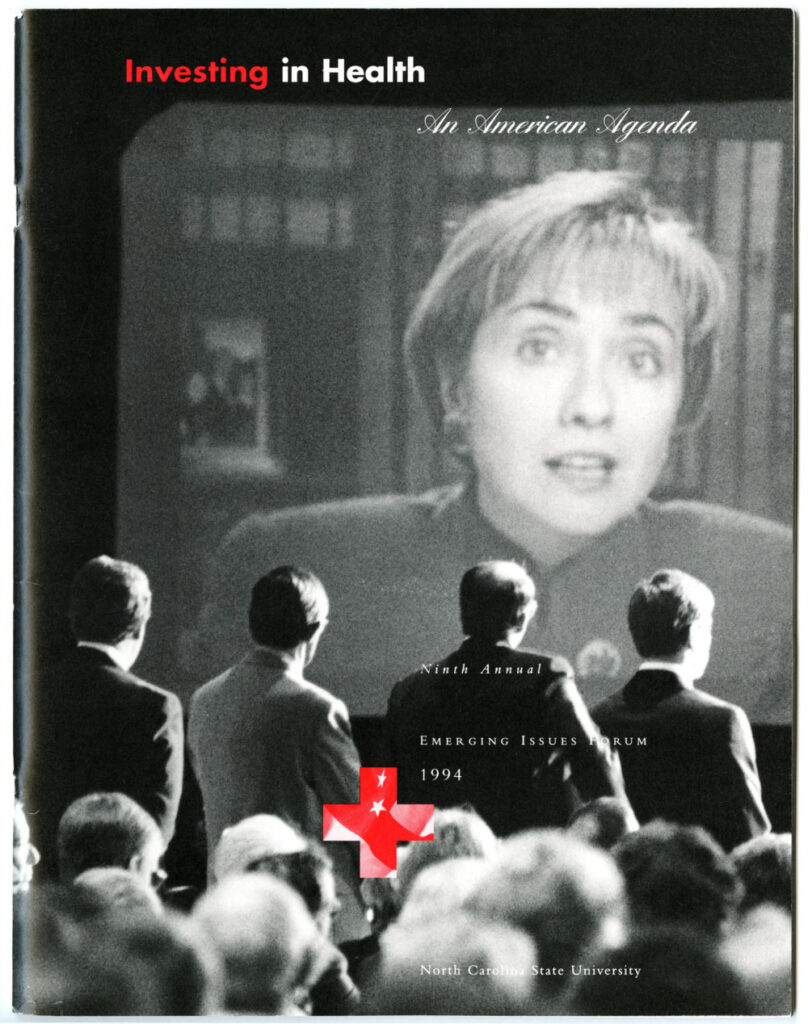
As was true in the first 50 years of the division, business and societal changes impacted division programming in the 1975-1999 period. Large agricultural conferences representing industries such as cattlemen, poultry farmers, and dairy farmers were important McKimmon Center clients. But as the new century approached, economic changes, new regulations, and automation diminished the need for these agricultural conferences.
When clients were lost during this period, division staff pivoted in response to new trends. Workplaces were becoming more inclusive. Non-credit short courses began focusing on interpersonal skills and managing and motivating employees. Beginning in the mid-1970s, the division partnered with industry and campus to offer a variety of solar energy short courses and conferences.
The UNC System was growing and there were leadership transitions in the division and the university. New campus leadership, deanships, General Assembly priorities, and UNC board governance trickled down to impact the division, and adaptability continued to be a watchword. In 1982, Bruce Poulton became chancellor, followed by Larry Monteith in 1989 and Marye Anne Fox in 1998.
In 1989, Turner retired, and the division began reporting to the vice chancellor for research, outreach, and extension, who reported to the provost. The division’s name changed to Outreach, Extension and Continuing Studies before being renamed the Division of Continuing Studies in 1998.
Arthur White served as interim vice chancellor for extension and public service, with Sondra Kirsch serving as interim associate vice chancellor for extension and public service. During their joint tenure as leaders, White focused on business operations and Kirsch focused on the academic and content side. Kirsch was later appointed as the sole division leader.
Three future division leaders — John Cudd, Denis Jackson, and Alice Warren — were working in the division during this period and were mentored by both Turner and Kirsch. Cudd became director of Summer School in 1979. Jackson and Warren both started as continuing education specialists in the Office of Professional Development and had begun to advance.
The division grew and reorganized. In 1991 Summer Sessions merged with Adult Degree Programs to form one unit within the division, eventually named Adult Credit Programs and Summer Sessions and led by Cudd. This unit was a significant entryway for those seeking to earn a degree from NC State. For example, in 1995-1996, 5,000 adults took credit courses through the non-degree Lifelong Education (LLE) program. In that fiscal year, 956 former LLE students were admitted to degree programs — 9% to undergraduate programs and 29% to graduate programs. Summer school also had a high volume: in 1995, 13,830 students enrolled in summer school courses, which at the time was the largest summer school in North Carolina.
Other notable developments that occurred in this time included:
- In 1982, CUACS created a new relationship with an important client when it began working with the NC Department of Public Instruction (NCDPI). CUACS still works with NCDPI, serving its online testing and assessment needs.
- In 1991, following a nationwide trend, Sondra Kirsch co-founded a new division unit, the Encore Program for Lifelong Enrichment, NC State’s non-credit lifelong learning institute for adults aged 50+.
- In 1995, the first Connecting-in-North Carolina (CINC) tour was held. Begun as a five-day state bus tour, this provost initiative was designed to give new faculty and administrators a better understanding of North Carolina, its employers, the land-grant mission, and NC State students’ communities. Run by the division with input from an advisory committee, it was also a way to encourage multidisciplinary collaboration. In 2023, responsibility for this program was transferred to NC State’s Outreach & Engagement office, where it continues to flourish.
One of the most significant developments that happened in this period was the rise of computers and the impact of the World Wide Web. In 1975, Microsoft was founded and Apple was in business by 1976. Changes were afoot and non-credit courses related to computers began to expand. One example was a seminar on data communication for computer professionals who sought the “development and use of a digital communication network.”
In 1978-1979, CUACS sponsored eight different workshops at various locations across North Carolina to teach Computer Technology for Local Governments. The workshops taught local government staff how to implement computers to improve management and efficiency. Other courses focused on databases and data processing. Starting in 1980, there was a series of Data Processing Education courses, which were eligible for CEUs and taught by computer science faculty and private industry instructors. As “microcomputers” came into being, software courses teaching the use of Lotus 1-2-3 and dBase were popular offerings. In 1989 the program title changed to Information Systems Education and ran through the 1990s. In the 1990s a new unit, the Computer Training Unit was formed as part of Continuing and Professional Education.
But as this new avenue of programming developed, the advent of digitization impacted other long-running division programs that served more analog industries. For example, since the 1950s, the division and the NC Press Association had run an annual two-day Mechanical Conference, which attracted press operators from throughout NC and beyond. The instructors included newspapermen, ink suppliers, and manufacturers of equipment, hailing from North Carolina, and elsewhere in the Southern and the Eastern United States. The 1971 brochure referred to “the newer methods” being used in the industry and noted that there would be a new session that focused on electronics and binary arithmetic. By 1980, sessions included electronic automation, desktop publishing, color printing, and composing. By the end of the 1980s, the conference was quickly losing its relevance, with decreasing numbers of instructors, attendees and program sessions, and it was discontinued.
The World Wide Web quickly changed business, industry, communication and education in the 1990s. In 1993-1995, NC State launched websites for the first time and began to use email as a communications tool. Mosaic was the web browser, which quickly gave way to Internet Explorer when it was launched in 1995. Digital learning was taking off and these innovations impacted how distance education was delivered and its importance to North Carolinians seeking degrees.
The university had been offering distance education for credit via videocassette, UNC-TV, and satellite and cable television. By the 1990s, the division had its own Office of Instructional Telecommunications (OIT). According to the division’s annual reports from the 1990s, growth in course offerings, enrollments, and geographic reach increased each year. In a 1996 survey conducted by OIT, 19% of respondents indicated that they were able to finish their degrees because of the cable/video/internet offerings. In the following year, cable/video/internet courses accounted for 114 off-campus credit offerings, an increase of 25% over the previous year. These courses reached students in 64 North Carolina counties, 15 other states, Canada, Germany, Japan, Mexico, Saudi Arabia, and Spain.
OIT was not the only campus unit offering credit courses via the latest technology. In FY1998, OIT courses comprised 50% of NC State’s distance offerings, the College of Engineering represented 45% and Textiles made up the final 5%. The NC General Assembly and the UNC System had been taking notice of the changes not only at NC State but system-wide.
Anticipating new legislation that would fund extension instruction at the same rate as on-campus instruction, in 1998 the university established six Extension Instruction Funding Response Teams (EIFRT) to address the impact this legislation would have on the previously self-supporting distance education programs. Sondra Kirsch, whose title was now vice provost for continuing studies, co-chaired EIFRT. When the legislation was passed in FY1999, the Division of Continuing Studies was given the responsibility of managing the transition for NC State, which was no small task, and would have an impact on division units and personnel.
In August 1999, Sondra Kirsch retired and John Cudd was named interim vice provost for continuing studies and director of summer sessions; later his title would change to senior associate vice provost for continuing studies. Cudd’s experience in both the non-credit and credit realms made him well-equipped to manage the issues posed by the consolidation of distance education. Once again the division would be prepared to adapt to changing times and circumstances, and the next 25 years would bring a whole new and unexpected set of challenges and opportunities.
We’re celebrating all year! Sign up for email updates when new articles get posted, and for more information about our 100th Anniversary Celebration event:
